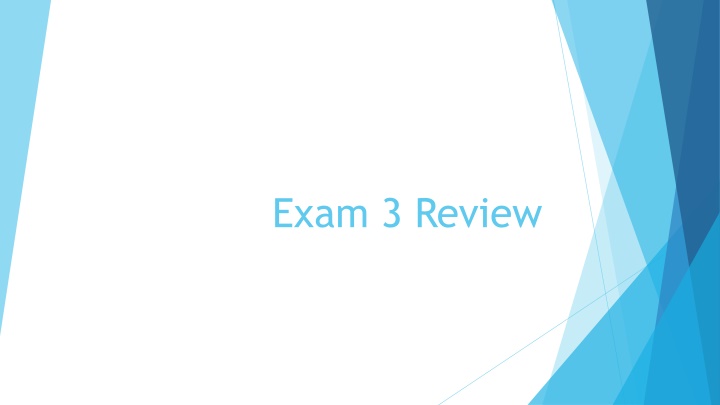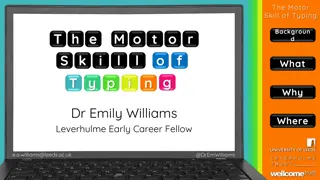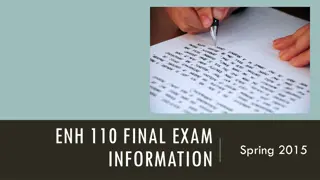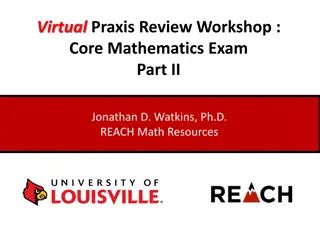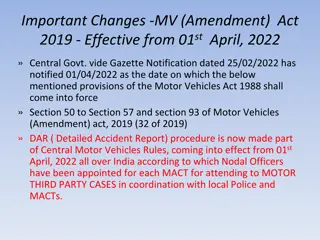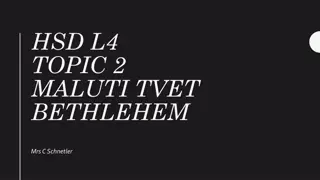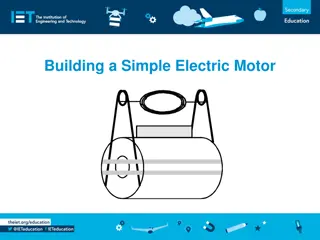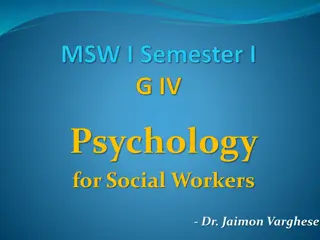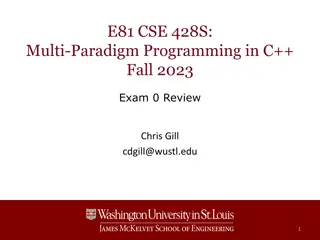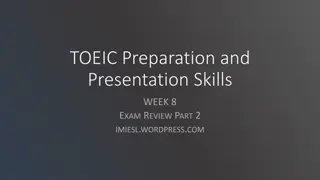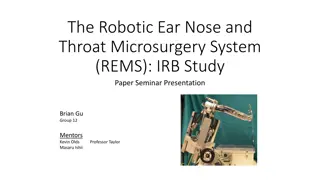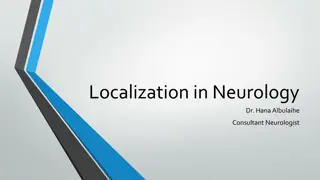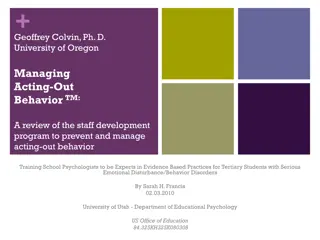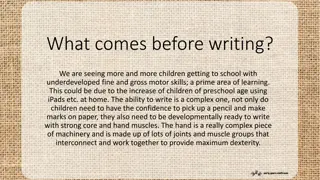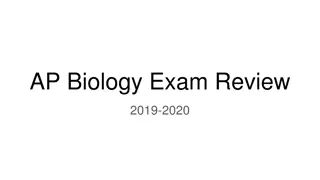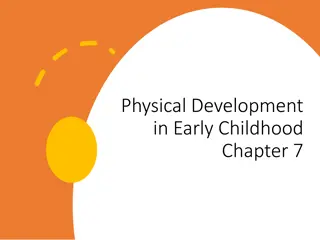Motor Behavior and Skill Development Exam Review
Explore the nuances of motor behavior and skill development in this comprehensive exam review. Delve into subdisciplines, performance experiences, learning vs. performance assessment, effects of skill practice, and differences in motor skill performance between boys and girls during childhood.
Download Presentation

Please find below an Image/Link to download the presentation.
The content on the website is provided AS IS for your information and personal use only. It may not be sold, licensed, or shared on other websites without obtaining consent from the author.If you encounter any issues during the download, it is possible that the publisher has removed the file from their server.
You are allowed to download the files provided on this website for personal or commercial use, subject to the condition that they are used lawfully. All files are the property of their respective owners.
The content on the website is provided AS IS for your information and personal use only. It may not be sold, licensed, or shared on other websites without obtaining consent from the author.
E N D
Presentation Transcript
Motor behavior includes three subdisciplines. Which is NOT one of the subdisciplines? a. motor control b. motor development c. motor performance d. motor learning
The type of performance experience engaged in for the express purpose of refining motor control function to improve skill is a. learning b. skill c. practice d. training
All of the following examine learning (rather than performance) EXCEPT a. a test of accuracy immediately after practice for accuracy b. analysis of a football game after two weeks of intrasquad practice c. measuring reaction time (RT) after two days without practice on the RT task d. a comprehensive final exam
*a. a test of accuracy immediately after practice for accuracy
Practicing a skill is most likely to bring about which of the following? a. conditioning b. endurance c. learning d. training
Boys and girls are similar in motor skill performance during childhood EXCEPT in which of the following skills (in which the sex difference is substantial)? a. running b. catching c. throwing d. jumping
A coach tells a player the correct way to inbound a basketball from the sideline; at the same time the coach is demonstrating how to throw the ball inbound in a gamelike situation. What is taking place? a. intrinsic feedback and sensory perception b. goal setting and extrinsic feedback c. observational learning and novice control d. extrinsic feedback and observational learning
*d. extrinsic feedback and observational learning
Practice guarantees improved performance. a. True b. False
The presence of spectators helps young athletes concentrate better when they are learning skills for the first time. a. True b. False
Group cohesion is facilitated by a. ignoring uniqueness of individuals in group b. a positive identity related to group membership c. lack of acceptance of role differentiation in the group d. forced socialization outside the group's function
*b. a positive identity related to group membership
What differentiates sport psychologists from exercise psychologists? a. training versus skill b. effects versus affects c. performance versus health d. between groups versus within groups
Personality research in sport has shown that successful and less successful athletes do not typically differ in traits but rather in their use of cognitive strategies and coping mechanisms. a. True b. False
What do sport psychology and exercise psychology (disciplines of kinesiology) focus on? a. the study of human thought and emotion b. the study of human action in a social environment c. the study of human thought, emotion, and physical activity d. the study of social environment, sexuality, and emotion
*c. the study of human thought, emotion, and physical activity
What are the ABCs of sport psychology? a. affect, behavior, cognitions b. attitude, behavior, control c. athletes, behavior, competition d. applied, behavior, conditions
What is the state of bodily energy or physical and mental readiness? a. stress b. anxiety c. arousal d. cohesion
Which of the following are the most common forces acting on a human performer? a. heat, friction, gravity, air or water resistance b. friction, gravity, ground reaction forces, air or water resistance c. air pressure, gravity, ground reaction forces, air or water resistance d. friction, gravity, ground reaction forces, gas forces
*b. friction, gravity, ground reaction forces, air or water resistance
If a tennis player's arm muscles are weak and unable to produce enough force with one hand to accelerate the ball sufficiently, he can create more total force by hitting with two hands. Which of the following principles best describes why this occurs? a. Newton's law of action-reaction b. An object will gain more momentum if more force is applied to it across a period of time. c. Newton's law of inertia d. Newton's law of acceleration
Biomechanists typically work in all of the following settings EXCEPT a. rehabilitation centers in which gait analyses are often used b. universities, where they teach and perform research c. occupational consulting organizations that provide assistance to companies in analyzing tasks to determine how they could be reconfigured to reduce fatigue and injuries d. a nutrition facility that targets women
Which of the following is LEAST likely to be a concept studied in biomechanics? a. Newton's law of action-reaction b. Newton's law of inertia c. torque d. body mass index (BMI)
Specialists who apply their knowledge of physiology, biomechanics, anatomy, and psychology in order to improve the movements, working environments, and training programs in the workplace are called a. ergonomists or human factors engineers b. work specialists c. occupational therapists d. occupational engineers
When an athlete is running across a field, _________ allow(s) for the person to be propelled forward. (The runner pushes down on the ground, and the ground pushes the person in the opposite direction.) a. lift forces b. ground reaction forces c. inertia d. acceleration
What was the discipline of biomechanics called in the past? a. motor control b. motor learning c. kinesiology d. motor development
A golf ball stays on the tee until the golf club hits it. Which of the following principles best describes why this occurs? a. Newton's law of action-reaction b. An object will gain more momentum if more force is applied to it across a period of time. c. Newton's law of inertia d. law of projectile motion
